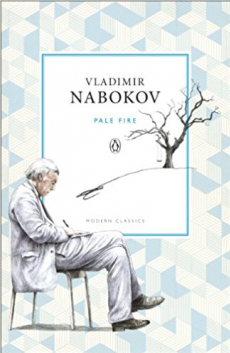
Email: reecejordan98@hotmail.co.uk
Total Article : 168
About Me:18-year-old sixth form student, studying English Literature, History and Government and Politics. My articles will broadly cover topics from the current affairs of politics to reviews of books and albums, as well as adding my own creative pieces, whether it be short fiction or general opinion.

Vladimir Nabokov has an extensive and well-documented fascination with nature. Only look at early pictures or a documentary about him and you’ll see him gripping a net with knee-length socks, beaming with intense concentration in an attempt to capture a wild butterfly. The impetus for such an obsession, he says, is because of nature’s ability to exude such beauty, and for this beauty to hold within it some form of deception. This, he says, is what he has always searched for in literature.
Indeed, this idea of deceptive beauty, or beautiful deception, resonated completely in his most famous novel, Lolita. Carried away by the lyricism of Humbert Humbert’s narrative, we are deceived to his actions, and our morality clouded. Lolita is, without doubt, one of the finest novels of the twentieth century, and so I had very high hopes coming into Pale Fire – especially since I had heard that it might even better its more famous sibling.
Pale Fire is a ‘novel’ with the most distinguished inverted commas. A poem, called ‘Pale Fire', is written by the fictional John Shade in the last month of his life, and is published shortly after with a foreword and commentary by his then-colleague Charles Kinbote. But this is no usual commentary as we’d expect. There is very little in the way of biographical detail, nor any much relevance with the actual body of the text itself. Instead, Kinbote draws on what might or might not be real deletions from the final copy of the text, as well as using the ‘anagrammatic method’ with Shade’s words to draw parallels between the poet's work and that of Kinbote’s own story of a king from Zembla (‘a distant northern land’). As Kinbote’s narrative slips and tricks, we are left feeling bemused. His insistence that we read the commentary even before we read the poem seems, in typical Nabokov fashion, shifty. But what is it all about?
Well, this again, like Lolita, sees Nabokov presenting beauty within deception. It mocks those who wish to completely frame the way in which we read a text. Bizarrely, and rather comically, there have been critics of Pale Fire who, by way of selective quoting and tenuous point joining, have asserted that Kinbote is in fact a creation of Shade. This exact method of drawing out peculiar coincidences and concluding questionably is exactly the type of thinking that Nabokov is poking fun at. For a case and point, watch for the amount of times Nabokov includes the colour of green and then imagine his smirk at those that try and wrack their heads around the coincidental and pointless repetition of a colour.
Whilst not being quite as pleasurable as Lolita, it is clear that only a writer of absolute genius can produce a work like Pale Fire. It is inventive, hilarious, but perhaps missed by most, a truly important novel for anyone who approaches literature like some overzealous conspiracy theorist.
Image Credits: amazon.co.uk

0 Comment:
Be the first one to comment on this article.